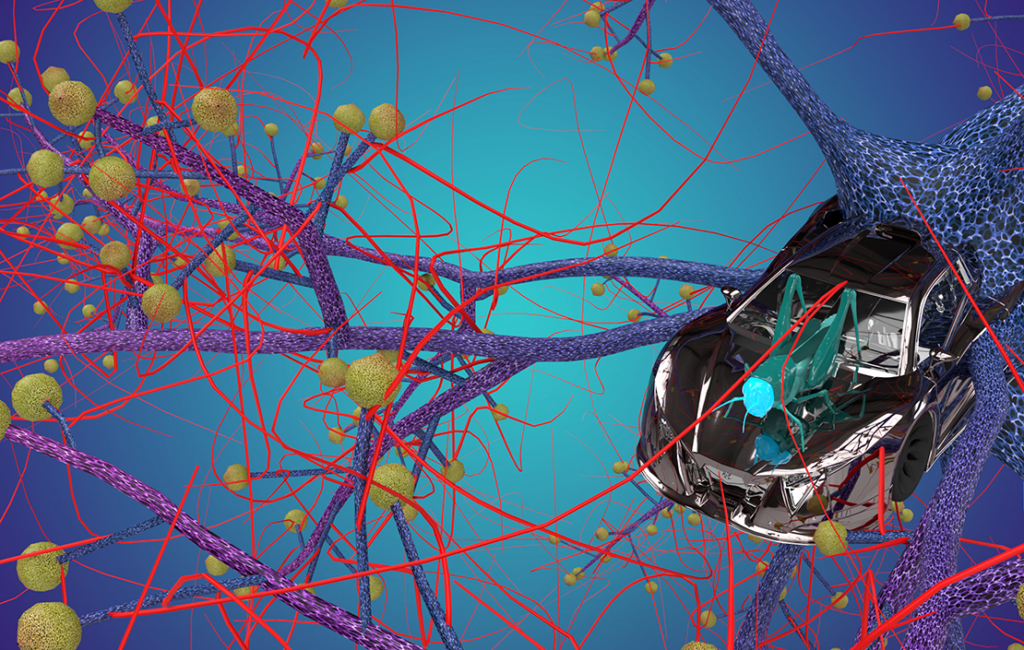Neural net’s night crashes assistance
A spiking neural network built using memtransistors can help prevent collisions between autonomous vehicles at night (writes Nick Flaherty).

Almost half of fatal accidents occur at night. As vehicles become autonomous, the ways of detecting and avoiding these collisions must evolve too, but current systems are often complicated, resource-intensive or work poorly in the dark.
Researchers at Penn State University have therefore developed a sensor based on the neural circuitry insects use to avoid an obstacle. Instead of processing an entire image, they processed only one variable: the intensity of a car’s headlights. Without the need for an onboard camera or image sensor, the detection and processing units were combined, making the overall detector smaller and more energy-efficient.
The collision detector uses eight photosensitive memtransistors constructed from a layer of molybdenum disulphide (MoS2) organised as a neural network. Each memtransistor has multiple terminals and includes a memory resistor (memristor) element made from MoS2 that stores the neural network weight and transistor technology. Multiple memristors can be embedded in a single transistor, enabling it to more accurately model a neuron with multiple synaptic connections.
The sensor has an area of only 40 µm2 and uses only a few hundred picojoules of energy — tens of thousands of times less than existing systems.
In real-life, night-time scenarios, the detector could sense a potential two-car accident 2-3 seconds before it happened, giving the vehicle enough time to take corrective action.
UPCOMING EVENTS























